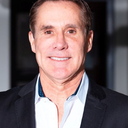I have a very round face when smiling and buccal fat removal did nothing to help it. I notice when my mouth is closed I have some pre jowls and little shadows on my chin. Is my chin slightly recessed and would a small implant help me?
Answers (3)
From board-certified doctors and trusted medical professionals

Dr. Michael P. Morrissette, DDS, FACS
Board Certified Oral & Maxillofacial Surgeon
Answer
Dr. David M. Kowalczyk, MD, MBA, FACS
Board Certified Facial Plastic Surgeon
Answer
Dr. Mats Hagstrom, MD (license on probation)
Board Certified Plastic Surgeon
Answer
More Chin Implant Questions
See all Chin Implant Q&AWE SEND PRETTY
EMAILS
What’s trending? Who’s turning heads? Which TikTok myths need busting? We’ve got you. No fluff, no gatekeeping—just real talk. Get our free, unfiltered newsletter.